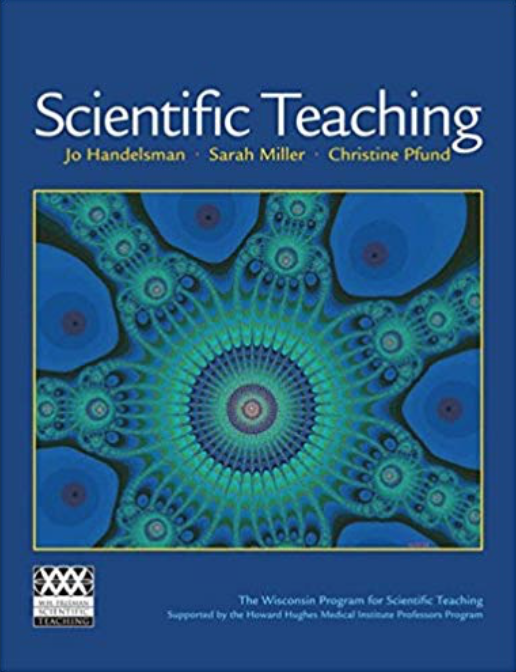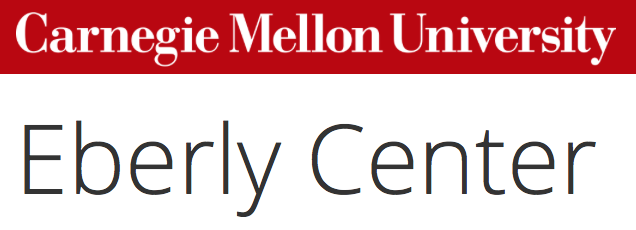teaching resources
scientific teaching
Recent decades have revealed incredible discoveries about how we think and learn, and about which teaching practices are the most effective for student learning. Scientific teaching uses active-learning techniques, "backward"-designed courses, and other evidence-based methods backed by the science education literature to engage students in the learning process, through "doing" and thinking like scientists in the classroom. One of my goals in teaching is to use scientific teaching approaches to enhance student learning and exposure to science, including faculty-led research. Below is a list of links to background publications/info of fundamental importance to scientific teaching, which I hope that others will take the time to read and implement.

Scientific Teaching Science article by Handelsman et al (2004).
Scientific Teaching book by Handelsman et al. (2006) - the seminal volume on the topic.
The Summer Institutes on Scientific Teaching, the foremost training opportunity in scientific teaching for university-level science educators.
Curated list of articles on scientific teaching, in embedded (downloadable) PDF format.
Scientific teaching Wikipedia page.
resources for developing lecture courses
Everyone wants to "design smart lectures." Here are links to some nice short videos from the University of Minnesota Center for Teaching and Learning (CTL) Mini Workshop on designing lectures that can help us do this: video set 1 - Examples, video set 2 - Overview (to be watched in this order). Requires Adobe Flash 6 plug-in. While designing lectures, it is also important to understand the questions and objectives of education. One way to develop your understanding of these topics is to read about Bloom's Taxonomy and be aware of ways to facilitate the highest levels of learning--analysis, synthesis, evaluation, and creation--in the classroom.
Teaching and Learning STEM: A Practical Guide book by Felder and Brent (2016) (covers course design and active learning).
10 steps for building your first academic course.
Developing a Course - Teaching Commons, DePaul University.
Design & Teach a Course, a guide within the Carnegie Mellon University Eberly Center for Teaching Excellence and Educational Innovation, with two main parts:
Additional guides from the Eberly Center include content on Technology for Education and how to Assess Teaching & Learning.
active learning techniques
Since becoming a buzzword in education in the 1980s and 1990s, "active learning" remains a hot topic at all levels of educational literature and practice, being implemented in primary through university teaching. Active learning essentially refers to any and all teaching methods that engage students to think about the material without passively listening to lecture (or multimedia) content. Several research studies suggest that active learning is better than simply lecturing students, and many educators including the majority of university professors use active learning techniques as a more effective way of "guiding" students towards "learning goals". Consistent with the immense popularity of active learning, there are numerous resources online that can help university professors design and implement active learning methods. Here is a short list of links to resources that I have found and used thus far in my career.
Active Learning Techniques at the Brigham Young University Center for Teaching and Learning (CTL)
Active learning on Wikipedia
Tips for building interactivity during lectures from the Carnegie Mellon University Eberly Center
The Field-tested Learning Assessment Guide (FLAG) is also a great site to visit. This website provides detailed information on a variety of active learning techniques, including concept mapping, minute papers, and portfolios.
resources for specific course types in the biological sciences
Example course content and syllabi online
Phil Ganter BIOL 4120 Principles of Ecology course, Tennessee State University
Mark Pyron BIO 216 Ecology course, Ball State University, Indiana
Mark Leighton Fundamentals of Ecology course syllabus at Harvard Extension School
- course: HES website
- syllabus: PDF
- Mark Leighton courses
Thomas M. Gehring General Ecology course, Central Michigan University
Yale Summer Session - 2018 Course Syllabi (contains links to various syllabi in PDF format).
University of Michigan Global Change class with good info that could be useful, particularly those on human ecology
